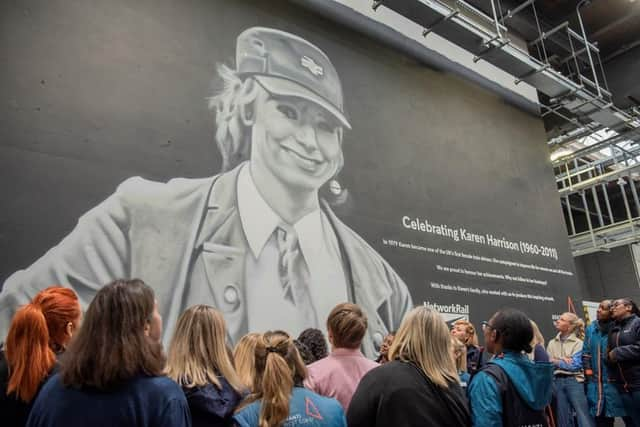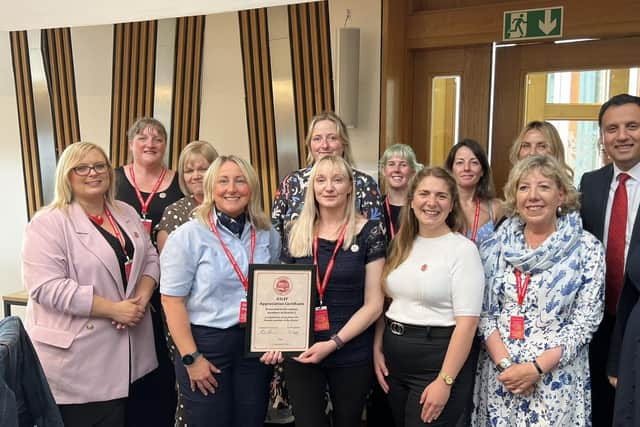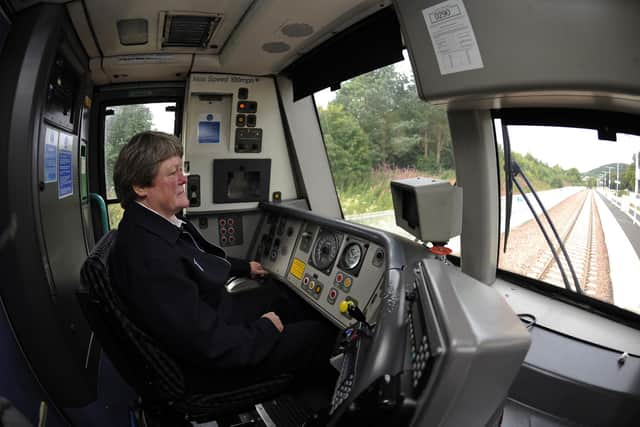Train drivers’ union Aslef is celebrating its 100th female Scottish member but there’s still far to go – Alastair Dalton
It’s extraordinary to think that the first woman to drive a train in Britain was as recently as 45 years ago, one of the last roles on the railways opened to them.
Glasgow-born Karen Harrison’s landmark achievement was commemorated in a mural unveiled at Euston Station in London in March to mark International Women’s Day.
Advertisement
Hide AdAdvertisement
Hide AdSix months on, another milestone was passed last week with train drivers union Aslef – ironically, the Associated Society of Locomotive Engineers and Firemen – celebrating its 100th female member in Scotland with a reception at the Scottish Parliament in Edinburgh.


My initial thought was that that wasn’t very impressive, since ScotRail has 1,256 drivers, and 11 of Aslef’s Scottish female members work for other train operators. In addition, only two are employed by freight train operators north of the Border.
However, I then looked back at past figures, and particularly at a story I wrote about a ScotRail recruitment campaign for more women drivers under the then managing director Mary Grant in 2007.
While ScotRail may still only have 7 per cent female drivers, I was shocked to see it was just 2 per cent back then – or only 21 of the train operator’s total of 900.
Thankfully, the diversity agenda – not just for women – has rightly gained significantly in importance since then, and I have sought in my coverage of transport to normalise their role at every level in what is still a heavily male-dominated sector, despite women comprising around half of its passengers.


Transport minister Fiona Hyslop highlighted that at the Holyrood reception, emphasising, as she did at the Scottish Transport Awards this summer, that transport was all about people and it was important the rail industry reflected wider society. More than three in four ScotRail staff are male.
There are signs of further progress with nearly a quarter of ScotRail’s trainee drivers being female, although, as Ms Hyslop said, their overall 7 per cent representation among drivers was “nowhere near where it needs to be”.
ScotRail is now on a par with the industry average, having lagged behind in 2007. But other train operators have shown what is possible, with cross-Border operator London North Eastern Railway (LNER) having more than 12 per cent female drivers, with 43 per cent of its total workforce women.
Advertisement
Hide AdAdvertisement
Hide AdAslef head of policy Lee James told me LNER’s industry-leading success was the fruit of many years of encouraging female driver recruitment, stretching back through various private-sector operators of the franchise prior to the current UK Government-run firm. She said the Elizabeth Line – London’s Crossrail – was another standard bearer, thanks to the diversity clauses built into its operating contract by Transport for London.


ScotRail service delivery director David Simpson said it was striving to make the role more attractive to women, such as with more flexible shift patterns, awareness of the effects of the menopause and even the design of train cabs. It’s on the right track with some encouraging progress but there is still far to go.
Comments
Want to join the conversation? Please or to comment on this article.